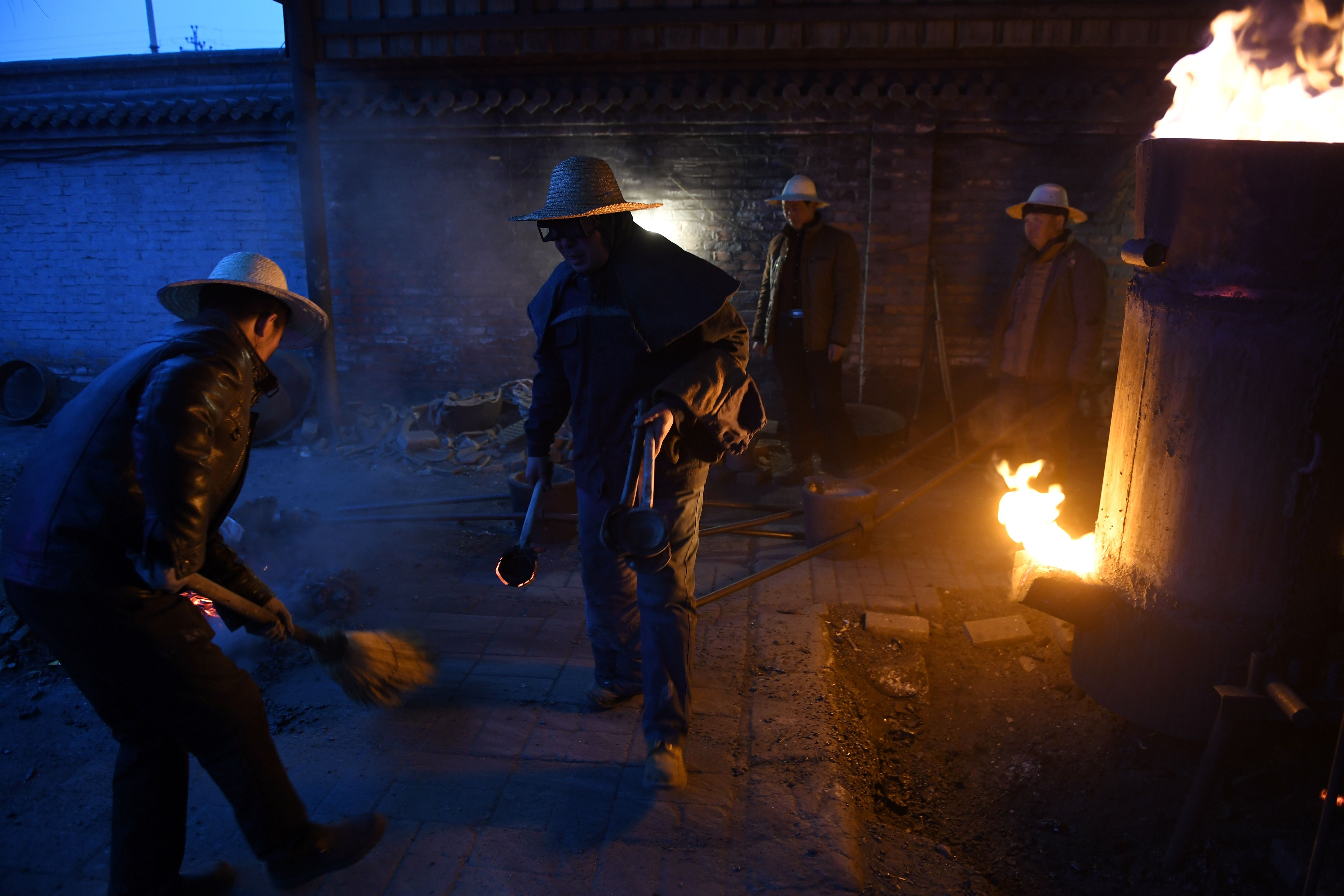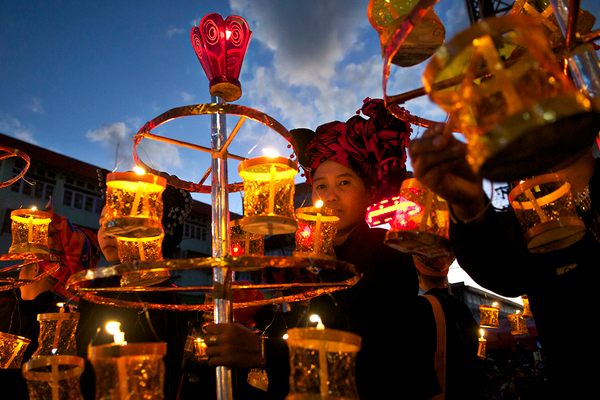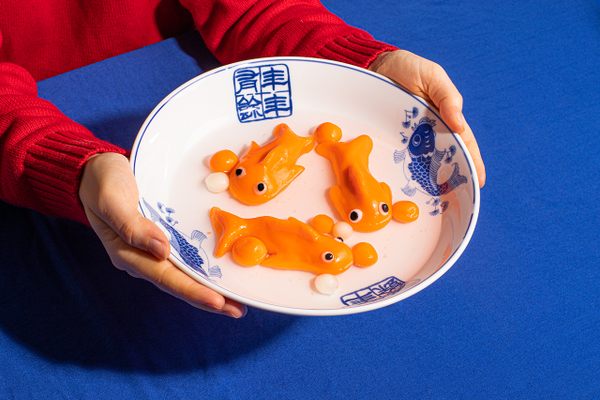For Lunar New Year, Blacksmiths Create Fiery Sparkling Rays With Molten Metal
The farming town of Nuanquan, China, celebrates the holiday with a 300-year-old spin on fireworks.
Every Lunar New Year in a farming village in China’s coal country, a group of daring blacksmiths dons wide-brimmed straw hats and sheepskin vests. It’s their only layer of protection as they fling molten metal against a cold stone wall and stand beneath bursting showers of fire.
This pyrotechnic display is known as Da Shuhua, which translates to “beating down the tree flowers.” The performance is part of the Festival of Lights Lunar New Year celebration, an approximately 300-year-old tradition in Nuanquan, a town in China’s Hebei province.

A blacksmith participating in the New Year spectacle in 2016 told ABC News that Da Shuhua began as a “poor man’s fireworks” display. The firecrackers and aerial fireworks China is most famous for used to be a luxury of the upper class. Smaller villages began creating their own “fireworks,” improvising by chucking metal melted down in 2,900-degree Fahrenheit heat against a stone city wall. Those who started the tradition played only with iron, but now blacksmiths use aluminum and copper to add hues of green and white to the iron’s blazing orange-red.
Not only are these blacksmiths extremely brave, they are skilled in the art of the Da Shuhua performance. Each blacksmith quickly scoops the liquid metal from a large basin and swings his arm in such a way that when the metal hits the wall it explodes and shimmers in dazzling spirals and flower patterns.

Today, the town of Nuanquan sets up a 33-foot high and 98-foot long wall fashioned in the style of the original wall. There is a stage where performers put on a lantern dance, folk dance, and musical numbers. But the beaming rays of Da Shuhua is the Festival of Lights’ grand finale, welcoming the new year in a blaze of glory.
This story originally ran in 2016; it has been updated for 2023.













Follow us on Twitter to get the latest on the world's hidden wonders.
Like us on Facebook to get the latest on the world's hidden wonders.
Follow us on Twitter Like us on Facebook